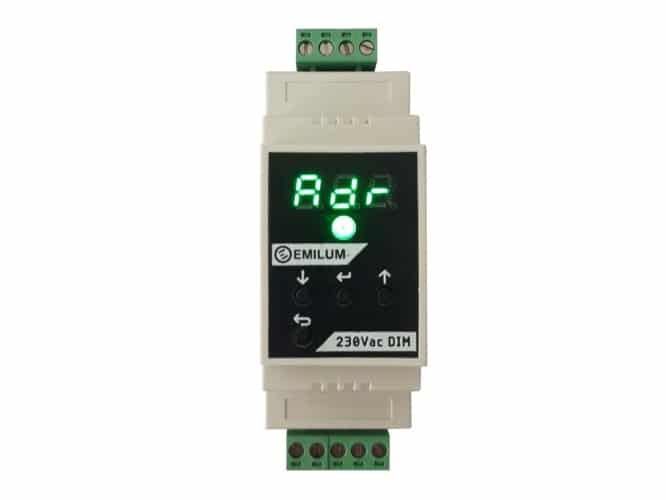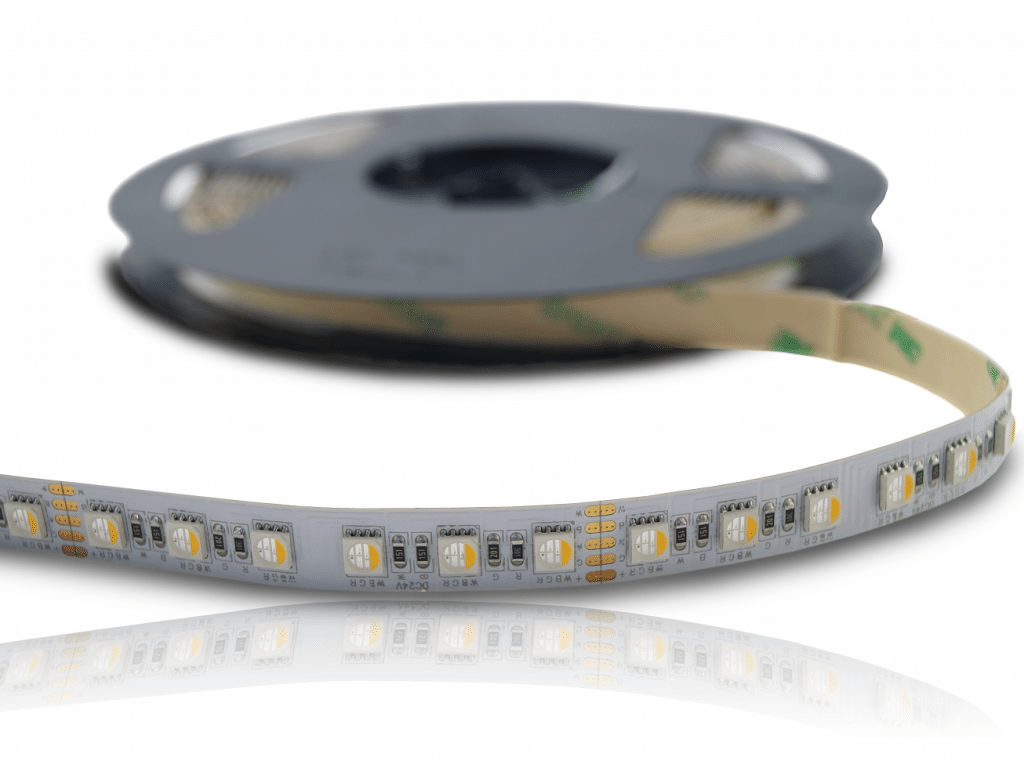
PWM dimmer: How to dim LEDs, LED spotlights and LED strips correctly
PWM dimmers are used for brightness control and color adjustment of LED modules (e.g. LED spots, LED strips, LED surface-mounted lights, LED wall lights). If you want to dim LEDs professionally and sustainably, the variant with the reduction of the voltage is quickly eliminated! This not only reduces the brightness, but also the forward voltage of the LED. However, this also changes with the temperature and the result is an unstable system. Even the light color of the LED changes with the current. This results in different colors. More detailed information on LEDs and their correct control can be found in the LED tutorial.
The human eye is a “sluggish system”, it reacts relatively slowly to changes in light and it is precisely this effect that PWM dimming makes use of. Put simply, with this variant the light from the LEDs is switched on and off very quickly with a PWM frequency and our eye detects the average value. PWM stands for pulse width modulation and neither the current nor the voltage is changed. The advantages are obvious: no change in the light color, no change in the flow voltage when brightness is reduced and perfect dimming even in the lowest range!
If the DC voltage is below 48V, PWM dimmers are therefore the first choice for dimming LEDs!
Features of our PWM dimmers
We proudly list the advantages of the Emilum LED PWM dimmers, as they are completely unique on the market in this form and above all in this combination:
- Short-circuit proof! A back-up fuse is no longer required, the PWM dimmer switches off in the event of a short circuit!
- 12 – 48V operating voltage: 12 – 24V PWM dimmer or 12 – 48V LED PWM dimmer selectable
- different. designs: DIN rail dimmer and throw-in housing
- Various interfaces available: DMX dimmer, DALI dimmer, manually adjustable from 0-100%
- 1-4 channel operation with output power up to 300W @ 24Vdc and 600W @ 48Vdc
- Versatile use: dimmer for LED strips, recessed spotlights, ceiling lights, garden lighting and much more.
- 16-bit fader for extremely smooth LED dimming
- Frequencies up to 1.2kHz adjustable, no more flicker
- Dimming curves: gamma or linear control (light vs. power linear)
- min. / max. values adjustable
We have also focused on the outstanding properties of the dimming outputs. Lowest brightness levels, finest dimming behavior, no jerking, high repetition frequencies and much more.
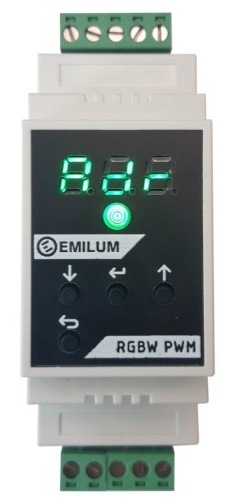
Our explanatory videos for the product
The operation
We explain how to operate our 4-channel LED dimmer 24V for Smart Home. You will get an overview of the DMX and manual mode. How the emergency mode works and much more.
In the switch cabinet
Our 4-channel DIN rail dimmer with PWM output was specially developed for use in smart homes,
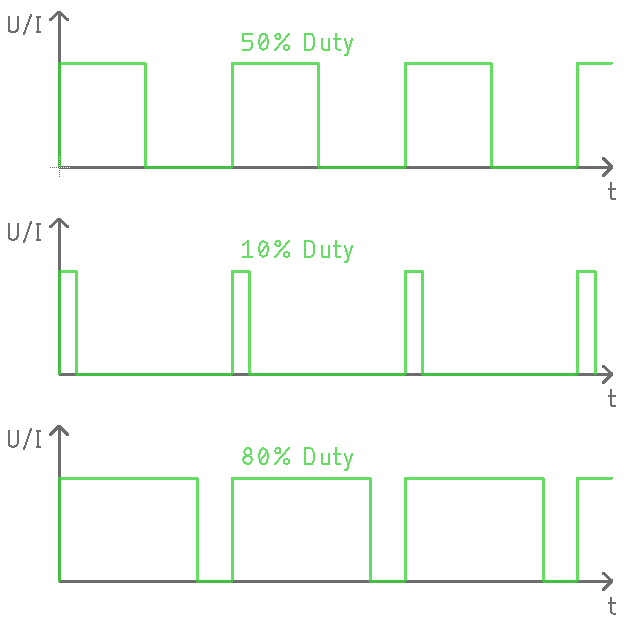
How does pulse width modulation (PWM) work?
The following is a simple PWM signal explanation: With pulse width modulation, a fixed PWM frequency is used, for example at 1000Hz the LED is switched on and off 1000 times per second. The desired brightness is set with the ratio of pulse (switched on) and pause (switched off). However, it is essential to ensure that the PWM frequency is set high enough so that no flickering can be perceived subconsciously (flicker index). Incidentally, cameras see this flickering because they work much faster than the eye.
The PWM frequency of our PWM dimmers can be set by the customer and is sufficiently high. Do you need LED dimmers for photo and video productions? Then contact us, because we have special software variations with adapted frequencies in the kHZ range!
LED controllers are very efficient because they disconnect the circuit during the pause time. They can therefore be regarded as virtually loss-free!
PWM dimmer for 1-, 2-, 3- and 4-channel operation
We have already explained above how pulse width modulation works. But what are multi-channel dimmers needed for now and how does color mixing actually work?
An RGB LED strip is equipped with at least the three primary colors (red, green, blue) and can generate almost the entire color spectrum from them using additive color mixing. If, for example, a red and a green LED are each dimmed with 50% PWM, a yellow light is produced. If you change the ratio to approx. 90% red and 10% green, you are in the orange range. A mixed white light consisting of red, green and blue is absolutely not preferable due to their narrow wavelength range –> very poor CRI (=color rendering index). RGBW is much better suited here! Now we come to the PWM dimmer and its number of channels:
1-channel operation: This allows the brightness of single-color LED lights such as 24V LED spots, 24V LED strips, COB strips (these are LED strips without dots) or other light sources to be changed.
2-channel operation: Suitable for mixing/adjusting two colors. The best-known representative is CCT (Correlated Color Temperature) (more on this topic in our blog article: CCT LED), as with some of our LED strips & LED recessed luminaires. For example, the color temperature of white can be adjusted very smoothly. The minimum and maximum value for this is determined with the respective color temperature of the warm and cool white LED (e.g. from 2700K-5700K as with our tunable white LED spot). Even HCL (Human Centric Lighting) applications – i.e. the natural color gradient of sunlight during the day – can be excellently adjusted. Of course, the color can also be dimmed without changing the color temperature
3-channel operation: As described above, this is mostly used for RGB applications. The three independent dimming stages use additive color mixing to create a new color that can also be dimmed. Our HSV color space mode is ideal for ensuring that there is no color shift here!
4-channel operation: Four colors, for example RGBW as with our LED lights(LED strips, LED ceiling spotlights, LED wall lights, LED surface-mounted lights, LED ceiling lights) can be operated independently of each other. Color mixing of all 4 channels is therefore possible with the RGBW dimmer! As an additional feature, we also offer the HSV color space for brilliant color mixing even at the lowest dimming level.
NEW: 2*CCT mode: In 2-channel mode, two outputs are always connected in parallel to increase the current and power. As the latest feature, we have now added the double CCT mode, where the channels are no longer in parallel. This makes it possible to operate 2 tunable white light circuits with one LED PWM dimmer independently of each other! In addition, Emilum’s protective interlocking technology has also been included for both lighting circuits! This eliminates the risk of overloading the spots and LED dimmer!
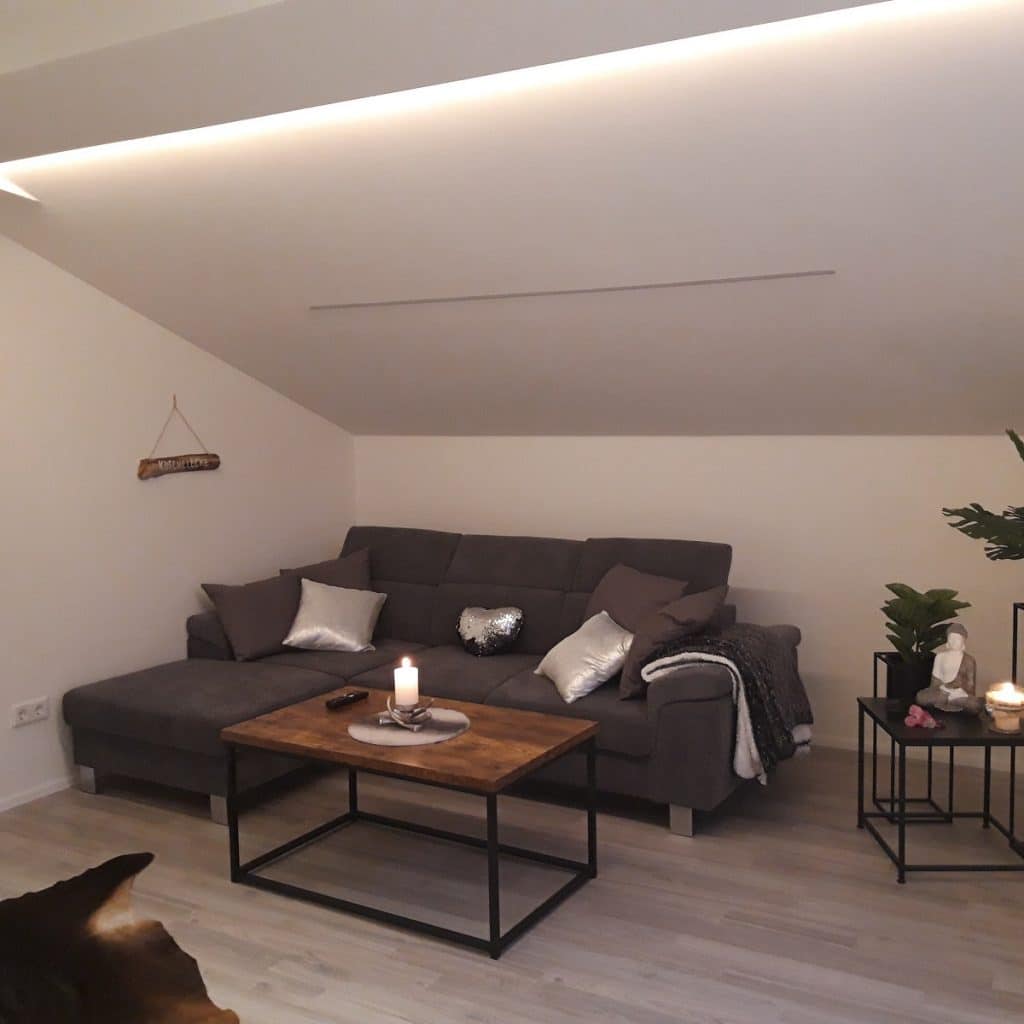
LED dimmers: Open standards instead of proprietary bus systems!
Open standards instead of proprietary bus systems! It is important to Emilum that the customer can decide which products to choose. With almost no other bus system is there as much choice as with the DMX bus. We would also like to take this opportunity to mention the very helpful DMX tutorial, which covers almost everything you need to know about this bus topology and DMX lighting control!
This is why you choose a bus system where there are more than 1 or 2 manufacturers, so that you are not “nailed down”. If you want to expand your home installation at a later date, for example, you are no longer dependent on the manufacturer’s portfolio and delivery options!
Instead, you are free to choose from the devices available on the market, whether PWM dimmers, leading edge phase control dimmers or relay actuators. The decision is entirely up to the customer!
Supported RDM telegrams
Other interesting categories:
In addition to the ceiling spots and LED strips, a dimmable luminaire with 230V should be dimmed correctly? There are no 230V PWM dimmers for mains voltage, but incandescent bulbs, halogen lamps, LED retrofits, electric or classic magnetic transformers, … are dimmed with Phase angle or phase cut-off in their brightness. More information on this topic and the important short-circuit detection:
Are the “Swiss army knife” of lighting. Whether for indirect lighting, under-cabinet lighting in the kitchen (please pay particular attention to a high colour rendering index: CRI), effect lighting or for retrofitting and optimizing existing lighting. 24V is standard for the LED strips. This means that the dimmer for LED strips perfectly suited for LED strips.
Our many years of experience in the industry help us enormously when selecting components for LED strips, and we are proud to present top products at a great price
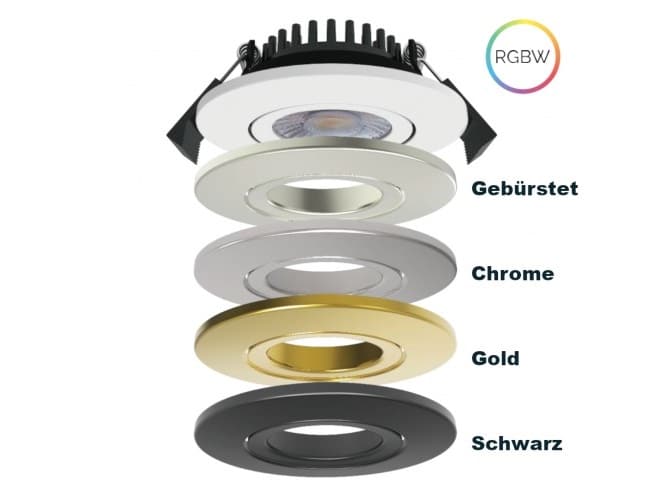
The days when a spotlight only provided light are over. Our technically sophisticated products offer various functions on request and adapt the lighting mood exactly to your requirements.
Quality is our top priority, which is why replacing bulbs is a thing of the past. You can obtain this top quality from us at a fair price. See for yourself here:

